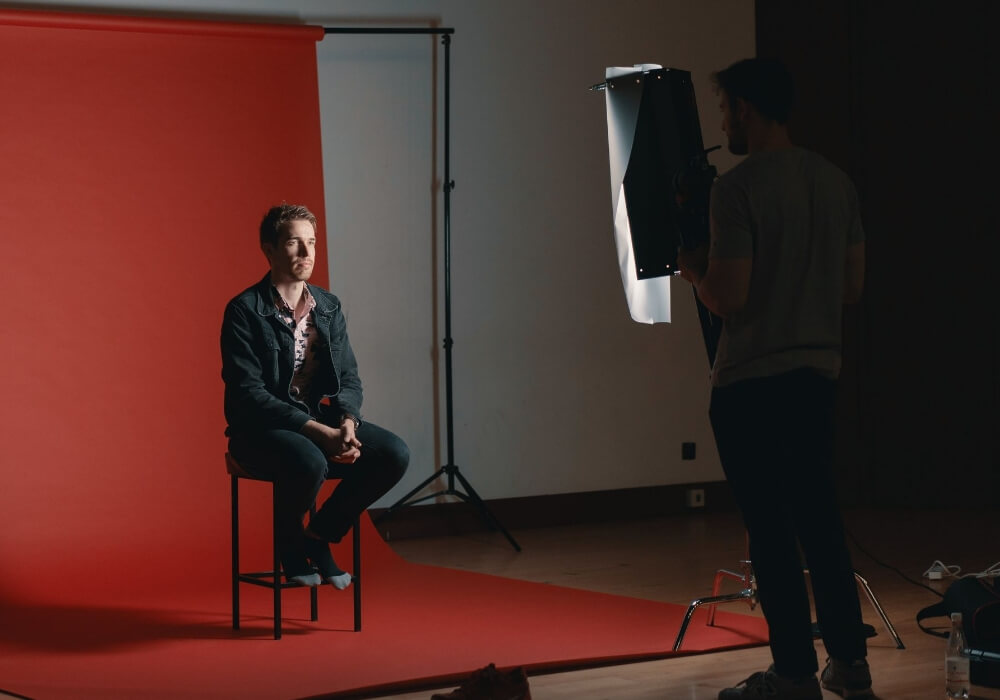
Documentary Interview Filming Techniques
The interview portion of a documentary helps to further establish the importance and expertise of the subjects involved in your film, but without proper steps to film the interview in a way that it will engage and captivate the audience, you’re really at a loss. However, you can capture documentary interview footage that effectively backs up the key points in your film and keeps your audience interested in what you have to offer if you follow some simple techniques.

Get a documentary production quote here!
Follow along with these documentary interview filming techniques to ensure you’re filming an interview that exceeds viewer expectations.
Prepare in Advance but Stay Flexible Too
As you prepare for the documentary interview, make sure that you have taken steps to write out your questions and that you have background knowledge of the subject that you’re interviewing on so as to be able to follow along and lead into various subjects in depth.
You may also choose to provide your interviewee with a list of the questions you intend to ask so that they can be prepared to answer in-depth. Depending on the tone of your documentary, now is the time to prepare but to equally remain flexible to allowing the interview to take its own course if interesting conversation strikes.
Do Not Ask Yes/No Questions

You want the interview to provide in-depth responses that will help to validate the content of your film. Don’t ask closed-end questions that have a yes/no answer.
Instead, word your questions in a way that allows the interviewee to provide an in-depth answer that could even lead into other interesting topics as you chat. It’s okay to eliminate anything off-topic when editing if you don’t like it or it doesn’t fit in with the documentary.
Keep Your Emotions to Yourself
You may feel strongly about something that the interviewee discusses, but now is not the time to sway his or her response with your own emotions. Instead, listen to what your interviewee has to say and consider a different viewpoint.
Equally important, do not answer your interviewee as he or she speaks. It is virtually impossible to edit out several “ums” or “yes I agrees” or anything else of that matter and your viewers certainly don’t want to listen to you agreeing with the entire interview.
Film for Several Minutes After the Interview Commences
Your documentary footage is technically complete when you are done with the last interview question but you may find that it pays off to keep the camera rolling for several additional minutes.
The footage captured during this time could be used for B-roll or, in some cases, you may capture an interesting fact or story from your interviewee that you would not otherwise have thought of but which can be included in your documentary.
Eliminate Background Noise

Nothing is more distracting than background noise that interrupts the documentation of the interview. Do what you can to eliminate background noise before you begin filming.
Consider the location of your interview and do what you can to eliminate any potential for background noise in advance. If noise occurs during a question/response, retake so as to capture without the interruptive noise.
Allow the Pauses to Add Depth
Of course, you don’t want long, awkward pauses to take place throughout the video but some pauses will add depth and emotion to the documentary. Embrace the silence in areas of the production that would help to build a sense of anticipation for the audience making them even more interested in what the interviewee has to say next- “what could it possibly be?”
Sometimes a pause is simply your subject thinking about his or her response. Leaving the pause in the footage shows the audience that the subject was legitimately thinking about what they had to say.
Repeat Answers that You Would Like to Be Further Explained

If your subject answers a question that appears to have much more detail behind what they are saying, repeat a portion of their answer back to them, inquisitively, so as to prompt them to elaborate on what they have to share.
Rewording the final portion of their response into a question can help to build out the data of the interview when you were unaware of how to really lead the subject along in providing valuable information.
Use these documentary interview filming techniques to produce quality content that will keep viewers engaged in your film from the beginning–to end.


